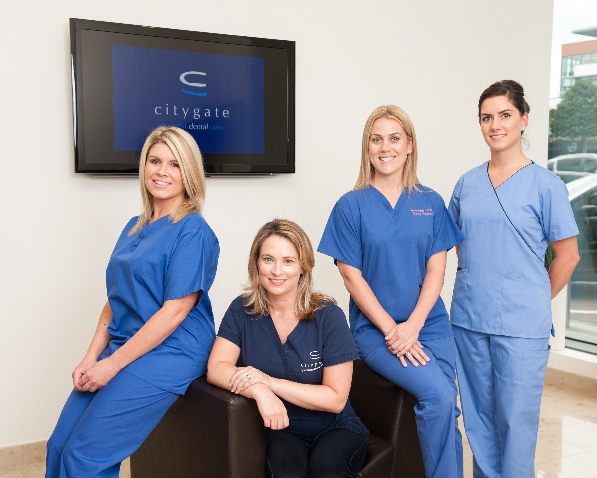

Periodontal health is often accomplished through non-surgical periodontal treatment, including scaling and root debridement (a careful cleaning of the root surfaces to remove plaque and calculus [tartar] from deep periodontal pockets), followed by adjunctive therapy, as needed on an individual basis. Most periodontists would agree that after scaling and root debridement, many patients do not require any further active treatment. However, the majority of patients will require ongoing maintenance therapy to sustain health. Non-surgical therapy does have its limitations, however, and when it does not achieve periodontal health, surgery may be indicated to restore periodontal anatomy damaged by periodontal disease and to facilitate oral hygiene practices.
Your bone and gum tissue should fit snugly around your teeth. When you have periodontal disease, this supporting tissue and bone is destroyed and pockets develop. Eventually, if too much bone is lost, the teeth will need to be extracted. If you're diagnosed with periodontal disease, your periodontist may recommend periodontal surgery. Periodontal surgery is necessary when the tissue around your teeth is unhealthy and cannot be repaired or stabilized with non-surgical treatment.
Your periodontist has measured the depth of your periodontal pockets. A surgical procedure may be recommended because you have pockets that are too deep to clean with daily at-home oral hygiene and a professional care routine.
During this procedure, your periodontist folds back the gum tissue and removes the disease-causing bacteria, before securing the tissue into place. In some cases, irregular surfaces of the damaged bone are smoothed to limit areas where disease-causing bacteria can hide. This encourages the gum tissue to reattach to healthy bone.
A regenerative procedure may be recommended in selective cases, when the bone supporting your teeth has been destroyed. These procedures can reverse some of the damage by regenerating lost bone and tissue. During this procedure, the gum tissue is folded back and the disease-causing bacteria are removed. Membranes, bone grafts or tissue-stimulating proteins can be used to encourage your body's natural ability to regenerate bone and gum tissue.
Periodontal procedures are available to lay the groundwork for restorative and cosmetic dentistry and/or to improve the aesthetics of your gum line. You may have asked your periodontist about procedures to improve a "gummy" smile because your teeth appear short. Your teeth may actually be the proper lengths, but they're covered with too much gum tissue. To correct this, crown lengthening may be performed. During this procedure, excess gum and bone tissue is reshaped to expose more of the natural tooth.
This can be done to one tooth, to even your gum line, or to several teeth to expose a natural, beautiful smile. Your specialist may also recommend crown lengthening to make a restorative or cosmetic dental procedure possible. Perhaps your tooth is decayed, broken below the gum line, or has insufficient tooth structure for a restoration, such as a crown or bridge. Crown lengthening adjusts the gum and bone level to expose more of the tooth so it can be restored.
Exposed roots are the result of gum recession. Perhaps you wish to enhance your smile by covering one or more of these roots that make your teeth appear too long. Or, maybe you're not bothered by the appearance of these areas, but the exposed roots are sensitive to hot or cold foods and liquids. Your gums may have receded for a variety of reasons, including aggressive tooth brushing or periodontal disease. You may not be in control of what caused the recession, but prior to treatment, your periodontist can help you identify the factors contributing to the problem. Once these contributing factors are controlled, a soft tissue graft procedure will repair the defect and help to prevent additional recession and bone loss.
Soft tissue grafts can be used to cover roots or develop gum tissue where absent due to excessive gingival recession. During this procedure, your periodontist takes gum tissue from your palate or another donor source to cover the exposed root. This can be done for one tooth or several teeth to even your gum line and reduce sensitivity.